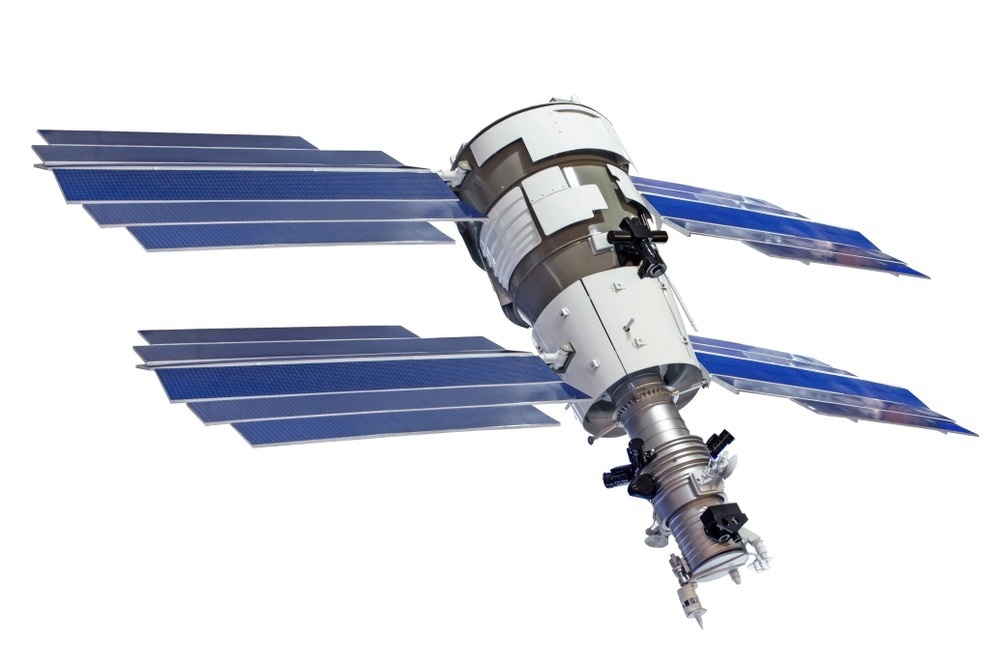Recently, at Lund University in Sweden, physics researchers were successful in building small solar radiation-collecting antennas—nanowires—using three varied materials that are a better fit for the solar spectrum than the silicon solar cells available.

Image Credit: aappp/Shutterstock.com
Since the nanowires are light and need little material per unit of area, they are currently to be installed for tests performed on satellites, which have been powered by solar cells and where efficiency, jointly with low weight, is considered to be the most significant factor. A few days ago, the new solar cells were sent into space.
A nanoengineering research team at Lund University working on solar cells made a discovery in 2022 when they were successful in building photovoltaic nanowires with three varied band gaps.
This, put differently, implies that one and the same nanowire comprises three diverse materials that react to different parts of solar light. The study outcomes have been reported in Materials Today Energy and in greater detail in Nano Research.
The big challenge was to get the current to transfer between the materials. It took more than ten years, but it worked in the end.
Magnus Borgström, Professor, Solid State Physics, Lund University
Borgström wrote the articles with the then-doctoral student Lukas Hrachowina.
There are around ten research teams across the world who are actively concentrating on nanowire solar cells.
The challenge has been to combine different band gaps in the solar cells and that door has thus now opened at last.
Magnus Borgström, Professor, Solid State Physics, Lund University
Alternative to Silicon in the Future
Solar cells consisting of different band gaps, called tandem solar cells, are thus far primarily discovered on satellites and are the subject of intensive research. The study’s goal is to significantly increase efficiency, to probably double that of current commercial silicon solar cells (nearly 20%).
Silicon solar cells have soon reached their maximum limit for efficiency. Therefore, the focus has now shifted to developing tandem solar cells instead. The variants fitted on satellites are too expensive to put on a roof.
Magnus Borgström, Professor, Solid State Physics, Lund University
The most general method utilized to build tandem solar cells is to synthesize various semiconducting materials on top of each other. Also, materials have the potential to absorb different parts of the solar spectrum.
Silicon-based tandem solar cells are gaining a lot of interest and it includes laying thin, semi-transparent films of other light-capturing material on top of the silicon.
The scientists in Lund make use of a bit different method. They have come up with an approach in which they build highly thin rods of semiconducting material on a substrate. The benefit is a small amount of material per unit area, which could decrease production charges and become a highly sustainable alternative.
The nanometre-thick rods comprise three materials consisting of different amounts of indium, gallium, arsenic, and phosphorus. In the laboratory, the scientists have till now achieved an efficiency of 16.7%.
A colleague, named Yang Chen, has exhibited that the nanowire solar cells equip the ability to reach 47% efficiency with the help of the present structure. Obtaining even greater efficiency needs more band gaps.
In the following step, he and his collaborators will enhance the triple diodes by enhancing the tunnel junctions that link the various materials present in the structure and make an attempt to decrease the effect of the nanowires’ surface, which is known to be highly significant on a nanoscale. Recently, Borgström received financial support for his project for this cause from the Knut and Alice Wallenberg Foundation’s initiative for sustainable materials, WISE.
In addition to their enhanced light absorption, nanowire solar cells have been characterized by their durability they can. For instance, it helps resist detrimental radiation in space better compared to the equivalent film-based tandem solar cells.
“A sheet of nanowires can be likened to a very sparse bed of nails. If some aggressive protons came along, which happens now and then, they would probably land between the wires and if they happened to eliminate some wires, it would not matter very much. The damage could be worse if they land on a regular thin film.”
Testing in Space During the Spring
Such benefits have resulted in the nanowire solar cells that are being recently suited on a research satellite, which was further sent into space in the second week of January by the collaboration partners of the researchers at the California Institute of Technology, Caltech, in the United States of America (USA).
“A lot of our digital communication is controlled by satellites, which in turn are powered by solar cells. Satellites convey GPS, TV transmissions, data traffic, mobile phone calls, and weather data.”
The satellite will be in orbit during the spring, and the outcomes are anticipated to be received on an ongoing basis.
Journal Reference:
Hrachowina, L., et al. (2022) Realization of axially defined GaInP/InP/InAsP triple-junction photovoltaic nanowires for high-performance solar cells. Materials Today Energy. doi.org/10.1016/j.mtener.2022.101050.